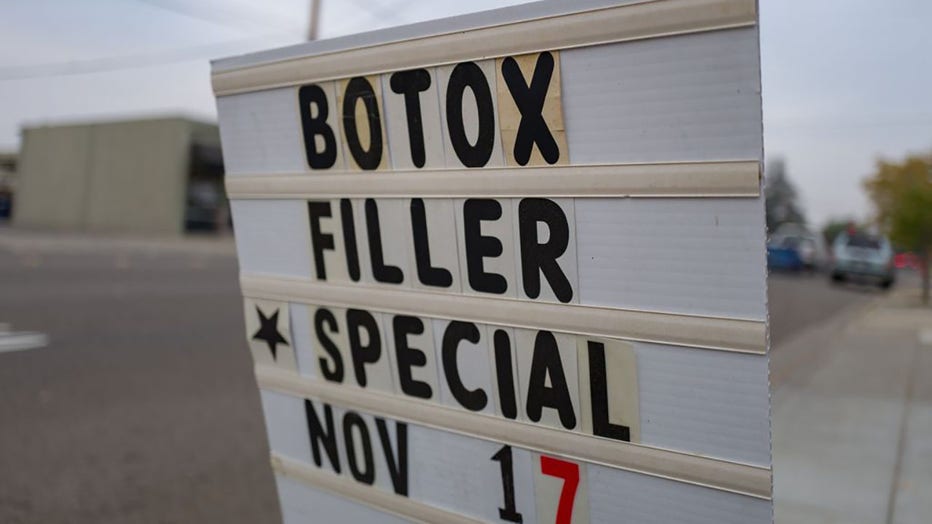'Counterfeit' Botox warning: Women hospitalized in several US states, CDC says
"Counterfeit or mishandled" Botox left at least 19 women across nine states with harmful reactions, prompting an investigation by U.S. health officials.
Nine of the 19 patients were hospitalized, and four were treated with botulism antitoxin "because of concerns that the botulinum toxin could have spread beyond the injection site," the U.S. Centers for Disease Control and Prevention said in a statement this week.
Five people were tested for a rare type of illness called botulism, and their results were all negative, the CDC added.
What is Botox?

FILE - Sign advertising Botox and filler injections on sale as part of a holiday promotion at a medical spa in Livermore, California, on Nov. 19, 2018. (Photo by Smith Collection/Gado/Getty Images)
Botox injections are made from the same toxin that causes botulism, according to the Mayo Clinic. Foodborne botulism can come from homemade foods that have been improperly canned, preserved, or fermented. Honey can contain the bacteria that causes infant botulism, so caregivers are advised to avoid honey for children under 1.
However, the forms of purified botulinum toxin used for Botox injections meet medical control standards that have been approved by the U.S. Food and Drug Administration, the Mayo Clinic says.
When administered by a licensed healthcare provider, treatment with botulinum toxin is widely viewed as safe, effective and largely devoid of serious side effects.
Botox injections work by temporarily reducing or eliminating facial fine lines and wrinkles. Injections of botulinum toxin block the nerve signals to the muscle where it was injected – leaving the muscle unable to contract and therefore diminishing unwanted wrinkles. Commonly treated areas include frown lines, forehead creases and crow's feet near the eyes, according to the American Society of Plastic Surgeons.
19 reports of bad Botox reactions in 9 states
The CDC said 19 patients have reported harmful reactions after receiving Botox injections "from unlicensed or untrained individuals or in non-healthcare settings, such as homes and spas."
Reactions have been reported in Colorado, Florida, Illinois, Kentucky, Nebraska, New Jersey, New York, Tennessee, and Washington.
"Public health and regulatory officials have found that some people received injections with counterfeit products or products with unverified sources," the CDC said. "Investigation into the sources of these products is ongoing."
All reports came from females, ranging in age from 25 to 59 years. A majority (95%) reported getting the injections for cosmetic purposes, the CDC said.
Patients reported experiencing symptoms like blurry vision and double vision, drooping eyelids, difficulty swallowing, dry mouth, slurred speech, difficulty breathing, fatigue, and generalized weakness.
The CDC said those considering getting Botox for cosmetic or medical reasons should ask the provider if they are licensed and trained to give the injections, and also if the product is approved by the FDA and obtained from a reliable source.
This story was reported from Cincinnati.

